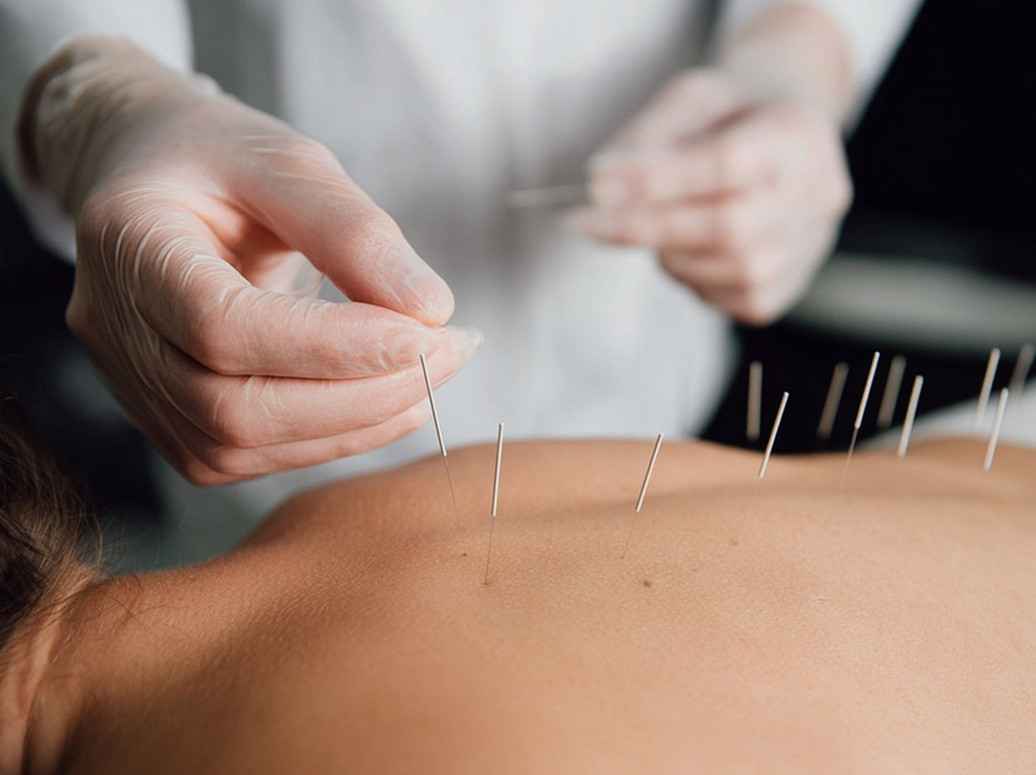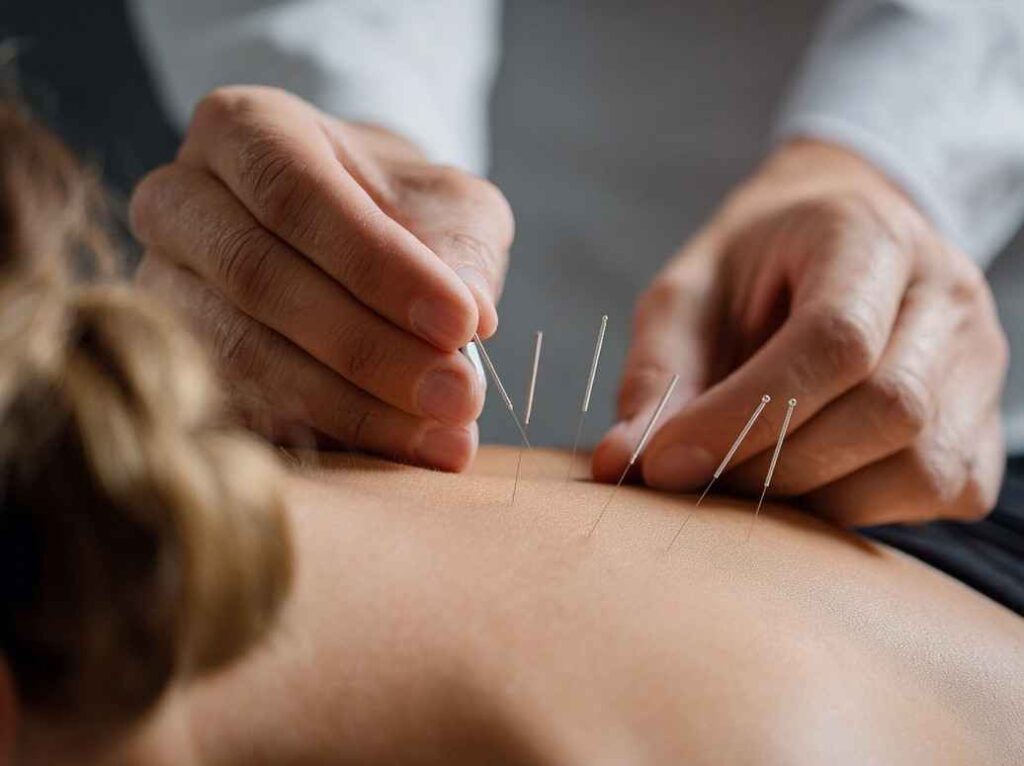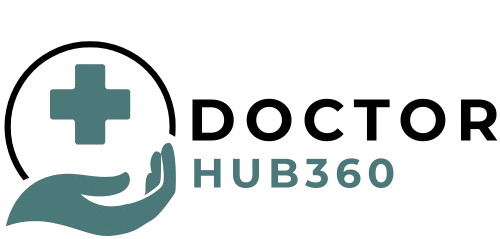How Dry Needling Speeds Up Athlete Rehabilitation

The relentless pursuit of peak performance pushes athletes to their physical limits. Injuries are an unfortunate reality in the world of competitive sports, and a speedy and effective rehabilitation process is crucial for returning to top form. Traditional rehabilitation methods like physical therapy remain the cornerstone of recovery, but innovative techniques are constantly emerging to enhance the journey back to the field. Dry needling is one such technique gaining significant traction in the realm of sports rehabilitation. This blog post will delve into the world of dry needling, exploring its potential to accelerate rehabilitation for athletes.
What is Dry Needling?
Dry needling is a minimally invasive procedure that involves inserting thin, sterile filiform needles into specific areas of the body known as trigger points. Trigger points are essentially hypersensitive knots within muscle tissue that can cause localised pain and tightness. This discomfort often radiates to a much larger area, significantly impacting an athlete’s performance and well-being. Repetitive strain, muscle overuse, or trauma can all contribute to the development of trigger points. When a needle is inserted into a trigger point, it can elicit a variety of responses, including a local twitch response in the muscle fibre. This involuntary twitch is believed to play a role in deactivating the trigger point and reducing pain perception.
Unlike acupuncture, which is rooted in traditional Chinese medicine and focuses on energy meridians, dry needling is based on Western anatomical and neurophysiological principles. It targets specific trigger points to address localised musculoskeletal pain and dysfunction. While both techniques involve the insertion of needles, their underlying philosophies and goals are distinct.

How Dry Needling Can Benefit Athletes
Dry needling offers a range of potential benefits for athletes struggling with injuries or aiming to optimise their recovery. Here’s a closer look at some of the key advantages:
- Pain Relief: One of the most significant benefits of dry needling is its ability to alleviate pain. By targeting trigger points, dry needling can help to deactivate them, reducing pain perception and overall discomfort. This allows athletes to participate in rehabilitation exercises with greater ease and focus on regaining strength and mobility. Studies have shown that dry needling can be effective for managing pain associated with various musculoskeletal conditions commonly experienced by athletes, such as low back pain, shoulder impingement, and plantar fasciitis [1]. The mechanism of pain relief is believed to be multifaceted. The needle insertion itself may disrupt the pain cycle, while the involuntary muscle twitch response can help to release tension and improve blood flow to the area. Additionally, dry needling may stimulate the release of endorphins, the body’s natural painkillers.
- Improved Range of Motion: Tight muscles and trigger points can significantly restrict an athlete’s range of motion, hindering their performance and increasing the risk of further injury. Dry needling can help to loosen tight muscles and break down adhesions, leading to improved flexibility and a wider range of motion. This allows athletes to move more freely and efficiently, both during rehabilitation and upon returning to their sport. For example, a runner with tight hamstrings may experience limitations in their stride length. Dry needling the trigger points in the hamstrings can help to improve flexibility, allowing for a more efficient running gait and potentially reducing the risk of overuse injuries.
- Enhanced Soft Tissue Healing: Dry needling is believed to stimulate the body’s natural healing processes. The insertion of the needle may create micro-tears in the injured tissue, which in turn triggers an inflammatory response. This controlled inflammation can promote blood flow to the area, accelerating the healing process and facilitating tissue repair. Increased blood flow delivers essential nutrients and oxygen to the injured area, creating an optimal environment for healing. Additionally, dry needling may stimulate the release of growth factors, which play a crucial role in tissue regeneration.
- Reduced Inflammation: Inflammation is a natural response to injury, as the body attempts to isolate and repair damaged tissue. However, chronic inflammation can hinder recovery and contribute to pain. Dry needling may help to modulate the inflammatory response, reducing pain and promoting faster healing. The mechanism behind this effect is not fully understood, but it may be related to the disruption of pain pathways or the modulation of the body’s immune response.
- Non-Pharmacological Pain Management: For athletes seeking to avoid the potential side effects of long-term pain medication use, dry needling offers a non-pharmaceutical pain management option. This can be particularly beneficial for athletes competing in sports with strict anti-doping regulations. Dry needling provides a safe and effective way to manage pain, allowing athletes to focus on their rehabilitation and return to competition sooner.

Research and Evidence
The use of dry needling in sports rehabilitation is a relatively new field, and ongoing research is necessary to fully understand its long-term effects and optimal application. However, existing studies have shown promising results. A review published in the British Journal of Sports Medicine analysed multiple studies on dry needling and concluded that it may be effective for managing pain associated with various musculoskeletal conditions.
Study published in the Journal of Strength and Conditioning Research investigated the combined effects of dry needling and traditional physical therapy for chronic low back pain in athletes. The results indicated that the combination therapy produced superior pain relief and improved functional outcomes compared to physical therapy alone. These findings suggest that dry needling, when integrated with a comprehensive rehabilitation program, can significantly benefit athletes struggling with pain and dysfunction.
It’s important to acknowledge that some studies haven’t shown a statistically significant difference between dry needling and placebo treatments. This underscores the need for further high-quality research with larger sample sizes and robust methodologies. However, the existing body of research, combined with anecdotal evidence from athletes and healthcare professionals, suggests that dry needling has the potential to be a valuable tool in an athlete’s rehabilitation toolbox.
Dry Needling in a Rehabilitation Program
Dry needling is most effective when integrated into a comprehensive rehabilitation program designed by a qualified healthcare professional, such as a physiotherapist or sports therapist. These professionals have the expertise to assess the athlete’s individual needs and determine if dry needling is appropriate for their specific injury or condition. Factors like the location and severity of the injury, the athlete’s pain tolerance, and their overall health status will be considered during the assessment.
Dry needling can be used alongside other rehabilitation techniques like manual therapy, therapeutic exercises, and modalities like ultrasound or electrical stimulation. Manual therapy techniques such as massage and joint mobilisations can help to further loosen tight muscles and improve flexibility. Therapeutic exercises tailored to the specific injury can help to strengthen weakened muscles and restore proper movement patterns. Modalities like ultrasound or electrical stimulation can promote blood flow and reduce pain. The combination of these approaches can create a synergistic effect, accelerating the healing process and optimising recovery outcomes.
For instance, an athlete with a shoulder impingement might receive a combination of dry needling to target trigger points in the shoulder muscles, manual therapy to improve joint mobility, and specific strengthening exercises to improve shoulder stability. This multifaceted approach addresses various aspects of the injury, promoting a faster and more complete recovery.
It’s important to remember that dry needling is not a magic bullet. While it can be a powerful tool, it should not replace other essential components of a rehabilitation program. Consulting a qualified healthcare professional with experience in dry needling is crucial to ensure safe and effective treatment. A good practitioner will discuss the potential benefits and risks of dry needling with the athlete beforehand and obtain their informed consent. The treatment itself should be performed in a sterile environment using sterile needles.
A Promising Technique for Rehabilitation
Dry needling has emerged as a promising technique for accelerating rehabilitation in athletes.Its one of the popular physio treatment plans for athletes right now. By targeting trigger points and promoting pain relief, improved range of motion, and enhanced tissue healing, dry needling can help athletes get back to their sport faster and stronger. While further research is needed to solidify its role in sports rehabilitation, current evidence suggests that dry needling, when used appropriately within a comprehensive program designed by a qualified healthcare professional, can be a valuable addition to the athlete’s recovery journey.
This comprehensive program should ideally be led by a physiotherapist. Physiotherapists are experts in movement and musculoskeletal function, and they possess the skillset to assess an athlete’s injury, develop a personalized physiotherapy rehabilitation plan , and integrate various techniques like dry needling, manual therapy, and therapeutic exercises. Their guidance ensures a safe, effective, and holistic approach to recovery, maximizing the benefits of dry needling and optimizing the athlete’s return to peak performance.
For more, visit doctorhub360.
